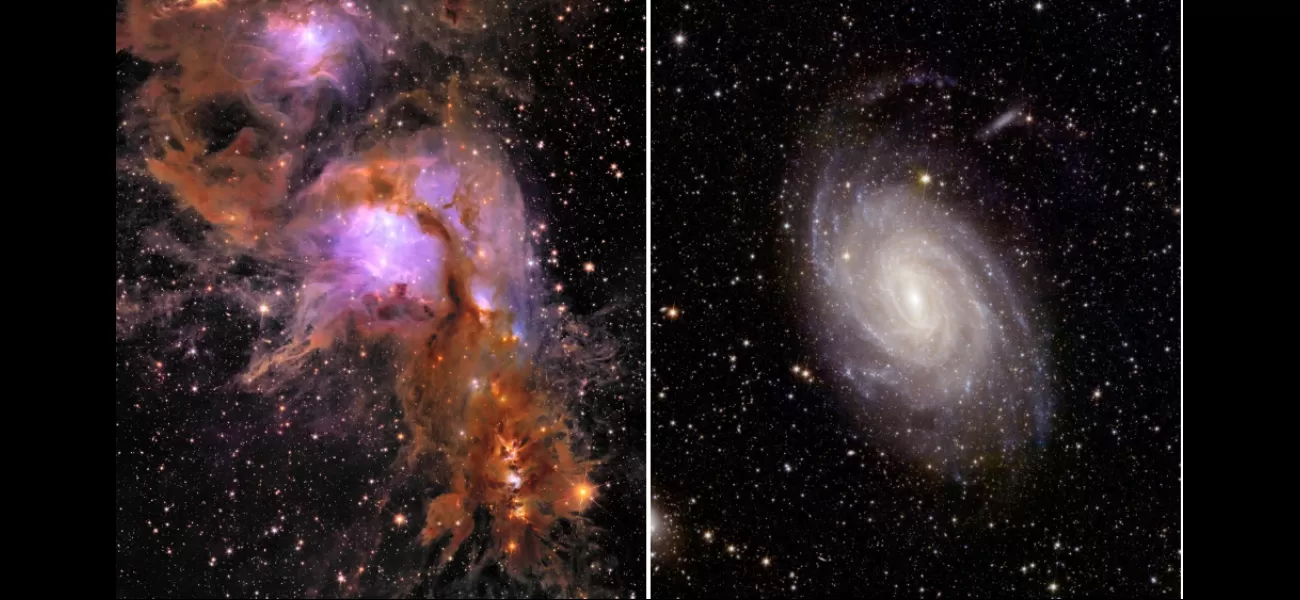A new space telescope in Europe has discovered "orphan" stars and other surprising discoveries.
Get a whole new perspective on the universe.
May 23rd 2024.

The Euclid space telescope has recently unveiled a series of breathtaking images that have captured the hearts and imaginations of people around the world. As we gaze upon the vastness of the universe, it's easy to feel small and insignificant. Especially when we think about the lonely existence of orphan stars, cast out from their galaxies and drifting through the dark void of space.
But as it turns out, these orphan stars are not as alone as we once thought. Thanks to the advanced technology of the Euclid telescope, we now know that there are a whopping 1,500 billion of them scattered throughout the Perseus cluster of galaxies, which is a mind-boggling 240 million light-years away from Earth. To put that into perspective, one light-year is equivalent to about six trillion miles!
These stars, emitting a ghostly blue light, were spotted floating in the space between the galaxies of the Perseus cluster. This cluster is considered one of the most massive structures in the universe, containing thousands of individual galaxies. But how did these orphan stars end up there in the first place?
According to astronomers from the University of Nottingham, these stars were either torn from the outskirts of galaxies or are survivors of dwarf galaxies that have been completely disrupted. It's a fascinating discovery that has sparked a lot of excitement and curiosity among the scientific community.
Professor Nina Hatch, who led the project team, expressed her surprise at the ability of the Euclid telescope to capture such clear images of the outer regions of the Perseus cluster. The team was able to study the colors, luminosity, and configurations of these orphan stars, leading them to believe that they originated from small galaxies.
But the orphan stars are just one of the many incredible findings made by the Euclid telescope. The images released today also include the breathtaking Messier 78 star nursery, the swirling galaxy NGC 6744, and the Dorado galaxy group. And let's not forget about the Abell 2764 galaxy cluster, which showcases a shining star from our very own galaxy.
One image, in particular, has left us in awe - the Abell 2390 cluster, which contains an unbelievable 50,000 galaxies! It's a thought-provoking sight that makes us question whether humans are truly the only intelligent life forms in the universe.
So, what exactly is Euclid? Launched from Cape Canaveral in Florida last July, Euclid is a space telescope created by the European Space Agency with the purpose of exploring the composition and evolution of the dark universe. Over the next seven years, it will observe billions of galaxies and map more than a third of the sky.
Equipped with two powerful instruments, the VISible instruments and the Near-Infrared Spectrometer and Photometer, Euclid is able to capture super sharp images of billions of galaxies and measure their shapes. And as we can see from the images released last year, it's capable of capturing stunning details of even the most distant objects, such as the famous Horsehead Nebula and the "Hidden Galaxy," also known as IC 342.
As we continue to explore and study the wonders of the universe, thanks to groundbreaking technology like the Euclid telescope, we can't help but feel a sense of awe and wonder at the vastness and complexity of it all.
But as it turns out, these orphan stars are not as alone as we once thought. Thanks to the advanced technology of the Euclid telescope, we now know that there are a whopping 1,500 billion of them scattered throughout the Perseus cluster of galaxies, which is a mind-boggling 240 million light-years away from Earth. To put that into perspective, one light-year is equivalent to about six trillion miles!
These stars, emitting a ghostly blue light, were spotted floating in the space between the galaxies of the Perseus cluster. This cluster is considered one of the most massive structures in the universe, containing thousands of individual galaxies. But how did these orphan stars end up there in the first place?
According to astronomers from the University of Nottingham, these stars were either torn from the outskirts of galaxies or are survivors of dwarf galaxies that have been completely disrupted. It's a fascinating discovery that has sparked a lot of excitement and curiosity among the scientific community.
Professor Nina Hatch, who led the project team, expressed her surprise at the ability of the Euclid telescope to capture such clear images of the outer regions of the Perseus cluster. The team was able to study the colors, luminosity, and configurations of these orphan stars, leading them to believe that they originated from small galaxies.
But the orphan stars are just one of the many incredible findings made by the Euclid telescope. The images released today also include the breathtaking Messier 78 star nursery, the swirling galaxy NGC 6744, and the Dorado galaxy group. And let's not forget about the Abell 2764 galaxy cluster, which showcases a shining star from our very own galaxy.
One image, in particular, has left us in awe - the Abell 2390 cluster, which contains an unbelievable 50,000 galaxies! It's a thought-provoking sight that makes us question whether humans are truly the only intelligent life forms in the universe.
So, what exactly is Euclid? Launched from Cape Canaveral in Florida last July, Euclid is a space telescope created by the European Space Agency with the purpose of exploring the composition and evolution of the dark universe. Over the next seven years, it will observe billions of galaxies and map more than a third of the sky.
Equipped with two powerful instruments, the VISible instruments and the Near-Infrared Spectrometer and Photometer, Euclid is able to capture super sharp images of billions of galaxies and measure their shapes. And as we can see from the images released last year, it's capable of capturing stunning details of even the most distant objects, such as the famous Horsehead Nebula and the "Hidden Galaxy," also known as IC 342.
As we continue to explore and study the wonders of the universe, thanks to groundbreaking technology like the Euclid telescope, we can't help but feel a sense of awe and wonder at the vastness and complexity of it all.
[This article has been trending online recently and has been generated with AI. Your feed is customized.]
[Generative AI is experimental.]
0
0
Submit Comment





